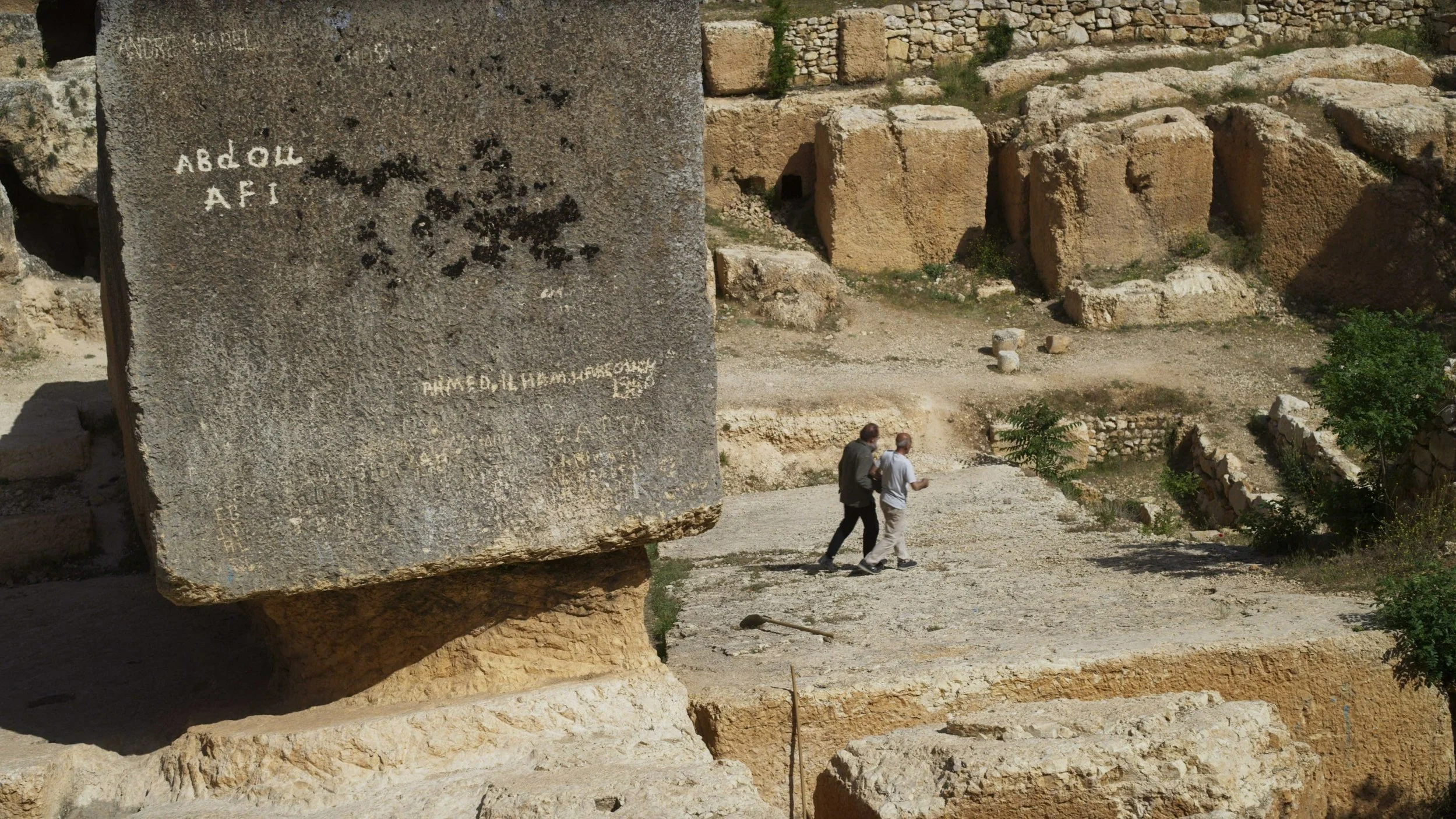Architecton
The Russian documentarian Viktor Kossakovsky turns his attention to concrete, architecture and ancient ruins.
Image courtesy of British Film Institute.
Anybody possessed of a deep love for outstanding photography should hasten to see this latest piece from the remarkable Russian filmmaker Victor Kossakovsky. Its visual impact will come as no surprise to anyone who saw his 2018 documentary Aquarela. That film was the first of his that I had seen and immediately came across as the work of a major artist, a cinematic visionary. This latest piece of his can certainly stand on its own but it appears that Kossakovsky regards it as one of three related works about our planet, the aforesaid Aquarela and an earlier 2011 work ¡Vivan las Antipodas! being the other two. Kossakovsky’s films are very much his conception but in addition he is an editor (sharing that credit here with a regular colleague Ainara Vera) and often the photographer. However, on Aquarela that last credit also involved Ben Bernhard who is sole photographer here and makes an inspiring impression with a wonderful eye for texture.
Architecton is a remarkable work but not necessarily the most appropriate introduction to Kossakovsky's cinema. Its immediate predecessor, Gunda (2020), was a piece apart being a minimalistic film centred on the study of a pig: it's a masterpiece and may require some adjustment to Kossakovsky’s slow approach but can rely on the appeal inherent in films about animals. Understandably it is Aquarela which is the film that cries out to be compared with Architecton and which reveals why the new film for all its visual wonders is less than fully satisfying. This new piece is focused on stone and concrete and the way in which they have been used over the ages. It is all seen from today's viewpoint but that includes looking at ruins from ancient times and contrasting these long-lasting buildings with those being built today in ways that give them a limited lifespan. Whether due to nature or to war, today's world also offers both the earth in movement as land slides away and rocks fall and disintegrate and the sight of domestic buildings ripped open by human destruction. A further instance of changing conditions is to be found in mankind’s ruthless commercial exploitation of land as developers set off explosions to transform landscapes for their own purposes.
The films mentioned have in common Kossakovsky's dislike of spoken commentary and his acute sense for memorable images as cinema's key form of expression makes that attitude understandable. However, when dealing with water in Aquarela he had subject-matter which spoke for itself even to the extent that what was being revealed about climate change needed no actual words for it to become apparent. In contrast, what we see in Architecton is not so self-explanatory. While cleverly utilising tracking movements of the camera (a frequent device) or using editing to create telling montage sequences, his film still leaves us asking questions. War-torn buildings may be identifiable as existing in Ukraine but apart from one late bit of identification (Baalbek in Lebanon) shots featuring ancient sites and massive rock forms often lack the information we want as to where they are. It is also the case that this wide-ranging but linked material is interrupted at intervals by footage shot at the home of the Italian architect Michele De Lucchi. He is seen supervising the creation of a circular patch in his garden bounded by freshly laid stones and intended as an area that will stand free of the human footprint (that even applies to his own, although his dog will be allowed in). These scenes seen at intervals take up a fair amount of time but don't express very much even if regarded as a riposte to the way we so often treat the natural world.
A few individuals appear in the film besides De Lucchi but the only significant talk comes at the close when Kossakovsky himself briefly appears to question the architect and their conversation very late in the day offers some comments on architecture past and present and indicates how we might read what we have seen up to this point. This final section is presented as an epilogue but its very presence hints at the film having not been able to speak fully for itself in the way that Aquarela did. Nor am I particularly keen on the decision to feature music by Evgueni Galperine which is decidedly avant-garde in tone. Nevertheless, whatever the film’s limitations Kossakovsky and Bernhard in partnership have given us countless images that render the watching of Architecton an experience that is often awe-inspiring.
MANSEL STIMPSON
Featuring Michele De Lucchi, Mauro Mella, David Aioli, Abdul Nabi Al-Afi, Nick Seur, Maksim Gaubetc.
Dir Victor Kossakovsky, Pro Heino Deckert, Screenplay Victor Kossakovsky, Ph Ben Bernhard, Ed Victor Kossakovsky and Ainara Vera, Music Evgueni Galperine.
Ma.Ja.De Filmproduktion/Point du Jour/Les Films du Balibari/ZDF/Arte-British Film Institute.
98 mins. Germany/France/USA/French Polynesia. 2024. UK Rel: 10 January 2025. Cert. U.


